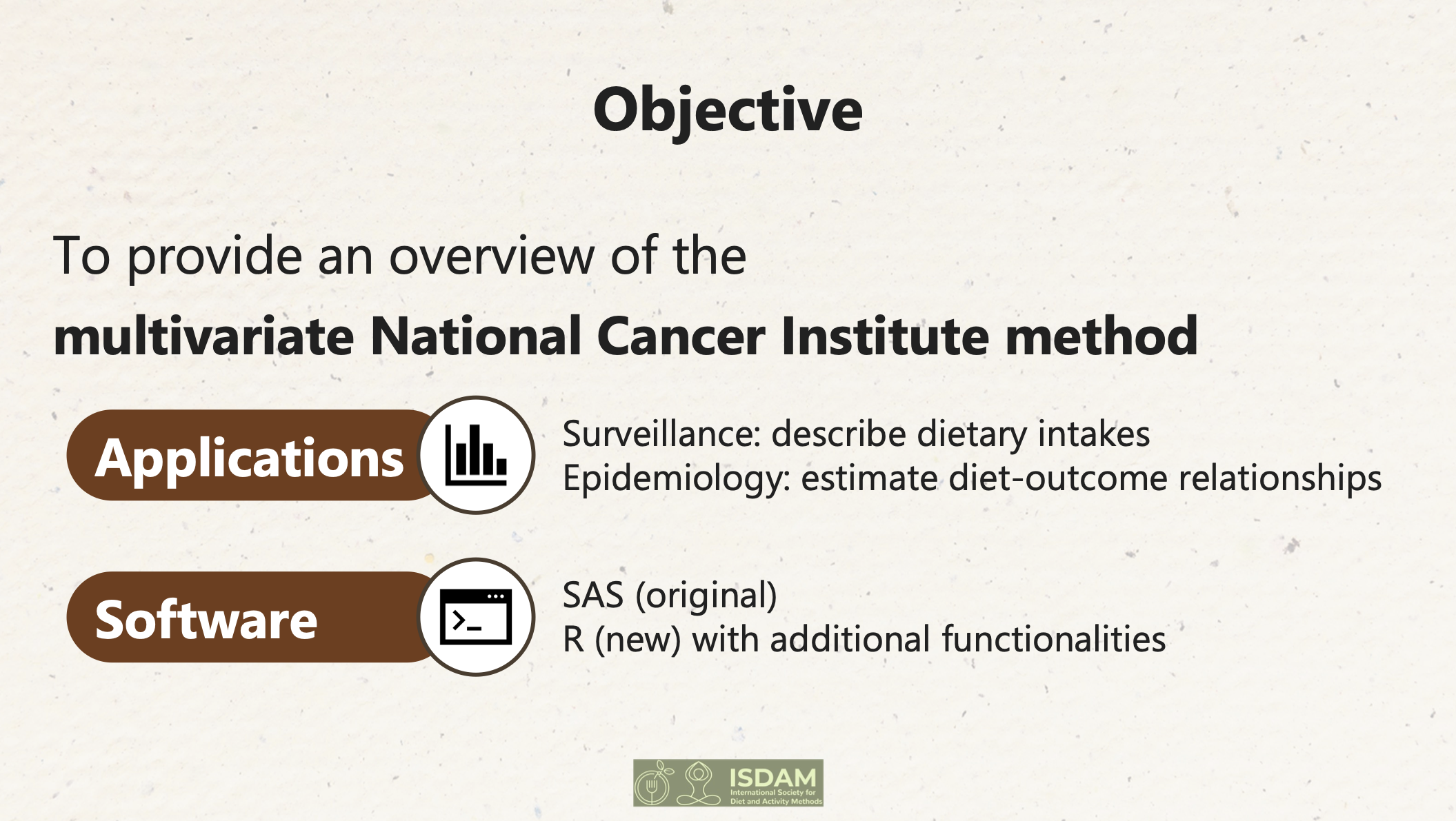A state-of the art tool to analyze data from 24-h dietary recalls: the multivariate National Cancer Institute Method
Date:

Talk: Presentation given at the ICDAM 2025 conference entitled: A state-of the art tool to analyze data from 24-h dietary recalls: the multivariate National Cancer Institute Method.
Slides: slides are available on Google drive
Organized by: Kevin W. Dodd
Abstract:
The National Cancer Institute (NCI) method is a statistical technique used to adjust for the effects of random measurement error in short-term dietary assessments (e.g., 24-h dietary recalls). SAS software to implement the technique has evolved over time, with the Markov Chain Monte Carlo (MCMC) multivariate method being the latest tool available from the NCI. While the NCI method has been widely applied over the last decade, the rationale for employing the multivariate method remains less well understood. In addition, the capabilities of the multivariate method deserve further attention, especially in epidemiological studies aiming to estimate diet-outcome relationships.
This presentation provides an overview of the NCI multivariate method including the rationale for its use, potential applications, and the capabilities of the recent adaptation into an R package.
In the surveillance setting, the multivariate method can estimate distributions of complex dietary exposures such as diet quality scores (e.g., HEFI-2019, HEI) applied to “usual intakes”. The multivariate method can also accommodate simpler use cases such as univariate and bivariate analyses that estimate the proportion of individuals at risk of nutrient inadequacy or excess. In the epidemiologic setting, the multivariate method provides major advances compared with older methods. First, the NCI method can consider multiple correlated dietary components, including both daily and episodically consumed foods. Second, relationships based on complex dietary exposures that depend on other dietary components can be generated. For example, one could use the NCI method to estimate the relationship between a diet quality score and an outcome. Third, the estimation process also allows users to directly apply flexible modelling to dietary exposures in the outcome model (e.g., splines), rather than only assuming linearity. Finally, the release of an R version should increase accessibility by a wider audience, encourage code sharing, and contribute to reproducibility of research findings, thus supporting more robust research worldwide.
In conclusion, the NCI multivariate method is a flexible tool for measurement error correction adaptable to a wide range of applications, from simple to complex, in both surveillance and epidemiology.
Additional information:
